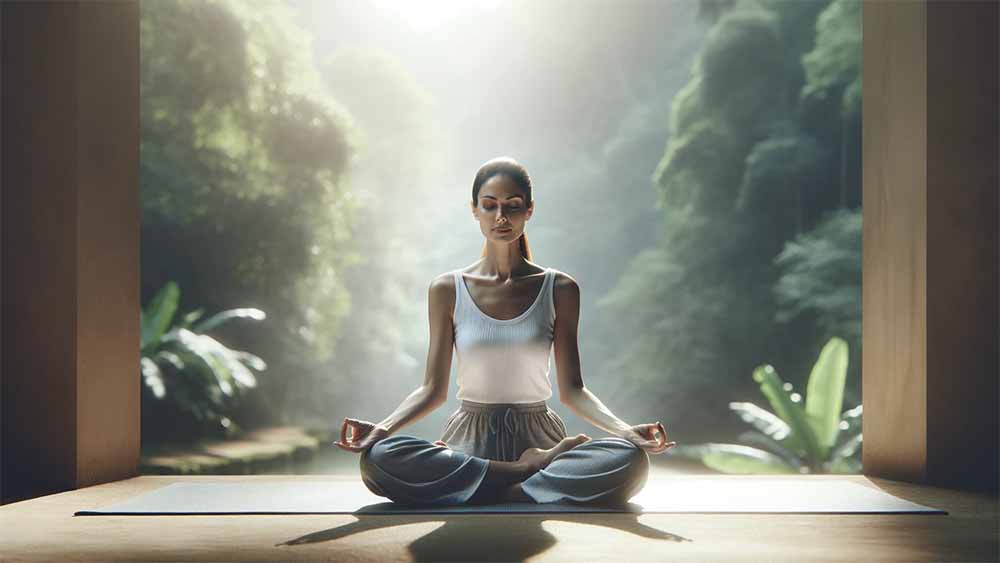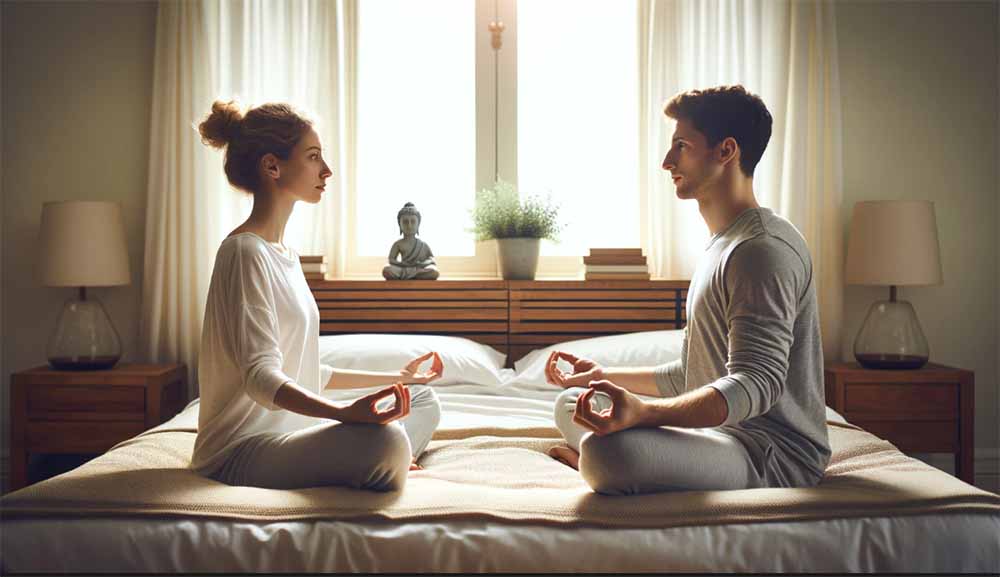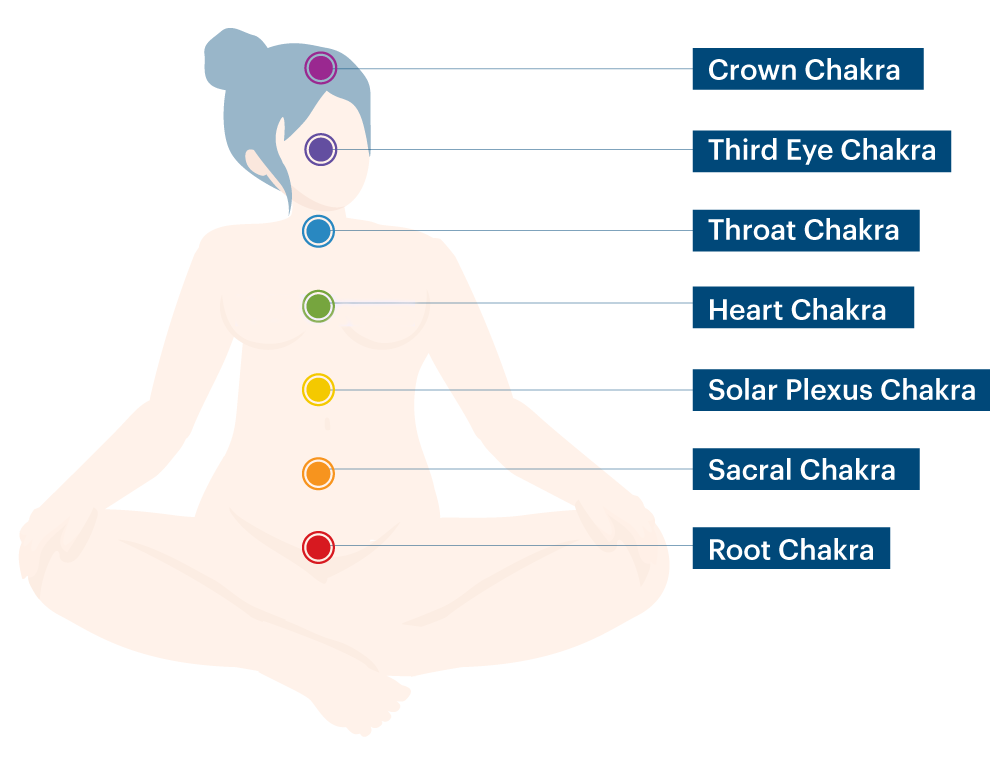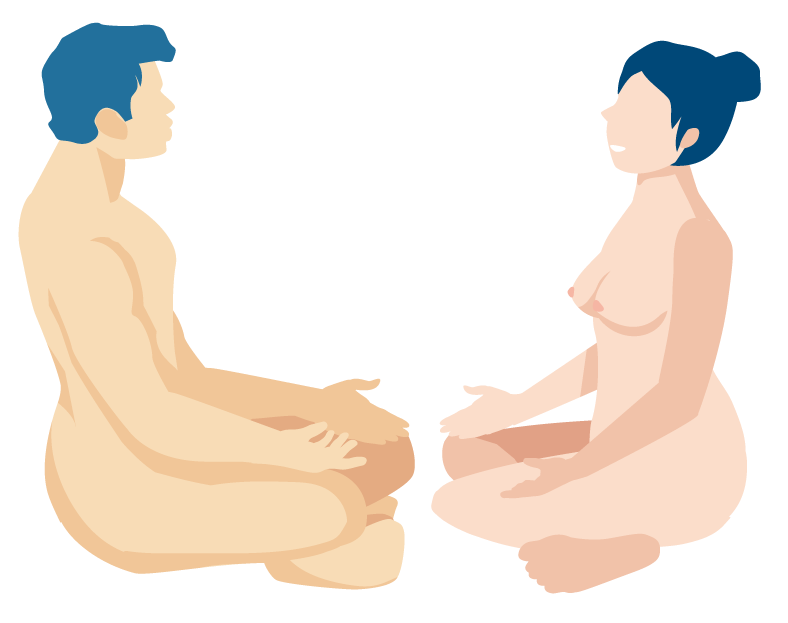In the Western world, “tantra” is often imagined as an Eastern sex practice, and few people know what it exactly is. But one thing is for sure—it’s more than just sex.
Tantra is a self-awareness practice that ultimately brings many changes into our lives. The goal is to connect the body, mind, and soul while supporting our transformation to a more abundant and fulfilling life.
Let’s take a closer look at tantric meditation. What benefits will it bring you, and how can it support and improve your life and sexuality.
Table Of Contents
What Is Tantric Meditation?
In tantra, there are several tantric meditation techniques. Some combine breathing, movement, sounds, and meditation. Others focus on mantra recitation, which is a sound composed of syllables, or on the contemplation of nature. Nonetheless, all of them share the same purpose. They are here to support you in becoming more conscious, more present, and more connected with not only yourself but with others. [1]
You can practice Tantric meditation alone or with a partner. The one we will explore in this article will help you open your “chakras,” or the subtle energy system we all have in our bodies.
What Are The Seven Chakras?
If you’ve ever studied Tantric yoga, you’re probably already familiar with the word “chakra.” If not, here’s a short and simple introduction.
In Sanskrit, “chakra” means “wheel.” Chakras are subtle energy points located along our spine, and Tantric meditation is used to remove blockages of those energy points. When you harmonize them, you have better physical and mental health. Once “unblocked,” our creativity and sexual powers are unleashed.
Here’s a list of the seven chakras and their main properties.
- Root chakra (located at the bottom of the spine): A blocked root chakra causes insecurities and fears. An unblocked root chakra increases confidence, stability, assertiveness, and instinct.
- Sacral chakra (located just below the belly button): A blocked sacral chakra causes a lack of energy, loss of libido, and depression. An unblocked sacral chakra increases creativity, passion, joy for life, and sexual pleasure.
- Solar plexus chakra (located above the belly button): A blocked solar plexus chakra causes compulsion to control, restlessness, and anger. An unblocked solar plexus chakra increases inner peace, confidence, and willpower.
- Heart chakra (sits at the level of the heart at the very center of the chest): A blocked heart chakra causes feelings of jealousy, fear, and sadness. An unblocked heart chakra increases self-love, love in general, and optimism.
- Throat chakra (located exactly at the level of the larynx): A blocked throat chakra causes communication blockages and shyness. An unblocked throat chakra increases self-determination, independence, expressiveness, and the ability to communicate.
- Third eye chakra (located at the forehead, slightly above and between the eyebrows): A blocked third eye chakra causes headaches, illusion, and isolation. An unblocked third eye chakra increases intuition, alertness, and imagination.
- Crown chakra (sits on the crown of the head): A blocked crown chakra causes mental exhaustion and a loss of purpose. An unblocked crown chakra increases mental power, connectivity with the universe, and abundance.
Benefits of Tantric Meditation
When you practice tantra meditation, you will see [2]:
- Lower levels of stress, anxiety, and depression. Tantric meditation will help raise your mood.
- Improvement of your sleep quality. You will feel more energized during the day.
- Increase in self-confidence, as well as self-love and self-compassion.
- Better intimacy in relationships.
- Increased levels of fulfillment in your sex life.
Why Meditate?
Meditation allows relaxation and the ability to quiet your mind. When you can relax, you can overcome problems such as erectile dysfunction that prevent you from having a fulfilled life.
If meditation sounds too esoteric, let’s demystify its process with science. The purpose is to slow down your brain waves and get beyond the thinking and analytical mind.
When we think negatively, we produce chemicals in the brain. These chemicals send signals to the body, spurring certain emotions such as frustration, anger, judgment, or fear.
Once we feel these emotions, we have even more thoughts about them, reinforcing these feelings. We go into negative feedback loops. The body gets addicted to these emotional states and thus becomes addicted to the stress hormones.
Through tantric meditation, we can change the program in our minds. We replace the negative thoughts with positive thoughts and halt the negative feedback loops. We slow down the thinking, analytical mind and become centered in our bodies. When that happens, the body relaxes, and the arteries open. A relaxed body allows the flow of blood to supply the genitals, which is essential for an erection.
The same goes for breathing techniques. When we learn to breathe correctly, more oxygen flows into the body through blood, and the arteries open and allow blood flow to fill the genitals.
If we add mindfulness exercises to both tantra meditation and breathing techniques, we learn to focus more on the present moment and out of our heads.
How Often and When to Practice Tantric Meditation?
I recommend practicing tantric meditation once a day.
If you can’t find the time every day to practice, do it as often as you can. If you can’t find time, be gentle with yourself, yet bring awareness to why you can’t make the time.
This tantric meditation takes at least 15 minutes. You should spend at least five minutes on each of the three chakras. Think about its benefits and make these principles part of your self-care routine.
The best time to practice is early in the morning before starting your day. But really, anytime during the day will do.
It takes time to implement new habits––21 days, according to experts. It’s when it becomes natural and you will notice significant shifts occurring within the body.
Stay open to the outcome and release any expectation to fix things quickly. Let it “work it out” for you and trust the process.
How to Practice Tantric Meditation: A Step-By-Step Guide
These Tantric meditation steps will help you unblock the three chakras important for your sexual vitality: the root, the sacral, and the heart chakras, together known as the chakras of love.
How to sit correctly
When you learn to sit correctly, it’s easier for your mind to become still and clear. Here are some basic rules to follow.
- Consciously keep your spine in natural extension. Do not lean and sit upright.
- Make sure that your face, shoulders, and hands remain relaxed.
- Keep your head exactly in the center, imagining the navel and the nose aligned on an imaginary vertical line.
- Slightly tuck your chin in order to relax your neck.
You can sit on the ground in a lotus pose and elevate your pelvis with a meditation cushion. This way, you avoid sinking in the lower back.
You can also sit on a flat chair with your feet on the ground. Overall, you must be comfortable.
Close your eyes and take a few minutes to let your breath and thoughts settle.
How to breathe properly
When you meditate, I recommend breathing from your belly. Diaphragmatic breathing is a great practice for relaxation and pain management.
- Take one hand and place it on your chest. Place the other hand on your belly.
- Inhale through your nose and exhale out through your mouth.
- Repeat and notice which hand is moving.
You should feel your belly moving when you take a deep breath through your nose. However, if you feel both hands or just your chest is moving, you’re using your neck muscles to breathe versus your diaphragm.
So now, when you take a deep breath, you want your belly to move, not your chest. You’re getting all the air to go in through your stomach. You’re taking a deep breath through your nose. It’s coming down past the back of your throat, into your chest, and into your stomach, expanding your belly.
That’s how you do tantric breathing meditation.
How to focus your mind properly
Tantric meditation is nothing but concentration. When you meditate, you learn to focus on different parts of your body and your external environment. The goal is to get a good understanding of yourself.
Instead of utter concentration, you shouldn’t feel tired after you meditate. It happens naturally by being present, breathing properly, and becoming mindful. When you meditate, don’t force anything.
Some people have trouble visualizing images during tantra meditation. If this is you, it’s totally fine. In that case, you should focus on paying attention to the flow of your breath and squeeze the body part related to each chakra.
Step 1: Preparation
- Sit upright and relaxed.
- Close your eyes.
- Allow your hands to rest loosely on the legs, or you can form a ring with your thumb and index finger together.
- Relax your body.
- Let your breath flow naturally and quiet your mind.
Step 2: focus on the root chakra
Now, direct your attention first to the root chakra at the base of your spine. Don’t force anything––just focus mentally on the lowest of your body in a relaxed way. Visualize the following:
- Your root chakra is a powerful red vortex of energy. It is slowly circling and radiating warmth, well-being, and security.
- This vortex of divine energy slowly grows larger and brighter until it illuminates your entire pelvic floor with red, healing light.
- You’re in touch with your primal life energy.
Step 2: Focus on your sacral chakra
While continuing to breathe in a relaxed way, focus your attention on the second chakra and visualize the following:
- Your sacral chakra is a powerful orange vortex of energy that calmly circles.
- With each breath, the vortex of energy grows a little larger until it illuminates your entire lower abdomen with orange, healing light.
- You’re in touch with the source of life’s joy, your creative power, and vitality.
Step 3: Focus on your heart chakra
After taking a few relaxed breaths, direct your attention to the center of your chest, where the heart chakra lives. Visualize the following:
- Your heart chakra is a powerful, green vortex of divine energy.
- As you continue to breathe in a relaxed manner, the vortex of energy grows larger until it floods your entire chest with green, healing rays.
- You’re consciously making contact with the source of universal love and compassion.
Step 4: Ending
End the session by bringing your awareness back to the here and now.
- Focus your awareness on your breath and feel your body.
- Be aware of your surroundings, the space where you are sitting.
- Then, slowly open your eyes again. Stay there for a little bit.
You Can Learn More About Tantric Meditation
These books should give you more knowledge about tantric meditation for couples and singles.
In his book, Tantra Meditation For Individuals, Shiva Girish introduces you to the concept of the subtle body. The book contains techniques to release stuck emotions and achieve mental stability. It introduces the tantra practices as a meditation, and if you want to understand tantra as a mindfulness practice, it’s a must-read. You can read more about this topic in my mindful sex guide.
The Power of Tantra Meditation is a book by Artemis Emily Doyle and Bhairav Thomas English. You will get an understanding of how tantra can keep your mind focused and increase your levels of sexual energy. It explains the common misconceptions surrounding tantra and shines a light on what tantra really is.
Chakra Meditation explains the seven major chakras in-depth. Swami Saradananda discusses several tantric meditation techniques to help tune into these kundalini energy centers.
***
Traditionally, the meditation described in this article was only taught to those dedicated to the Buddhist tantra path. However, now these sexual rituals have become available to you all.
Enjoy your spiritual growth journey!
Hakima
- What Is Karezza? A Beginner’s Guide To Spiritual Sexual Practice - April 29, 2024
- 10 Tantric Sex Positions For More Intimacy And Better Orgasms - April 27, 2024
- What Is OMing? Beginner’s Guide to Orgasmic Meditation - April 26, 2024



